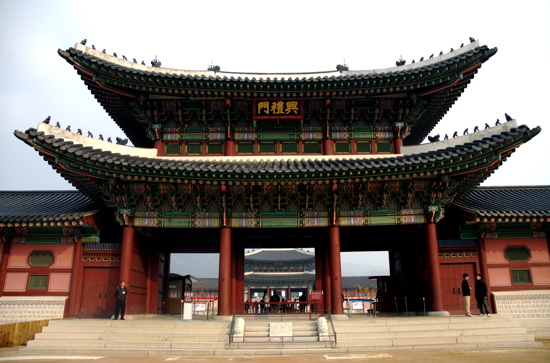- N Seoul Tower located on Mt. Namsan offers great panoramic views of the city, and has been a symbol of Seoul since it first opened to the public in 1980.Not only the tower was recently undergone a major remodeling, but also a new name following a complete makeover. It is now a true cultural space with various performances, movies, exhibitions as well as upscale restaurants and snack bars.
-
Myeongdong It is all about fashion, fashion & fashion in Myeongdong, Seoul’s primary & most famous shopping district. If it’s variety that you’re after, there’s no better place to shop than Myeong-dong where you’ll find everything from internationally-recognized name brands to unique items.Myeongdong also houses a variety of family restaurants, fast food, plus Korean, Western and Japanese dining options. Many restaurants in Myeongdong specialize in pork cutlet (donkas) and kalguksu (thick noodles).
-
HongDaeThe area surrounding Hongdae as it’s affectionately called, is the center of Korea’s youthful nightlife. Many of Seoul’s idiosyncratic clubs that draw the younger set are clustered in the area. With Hongik University nearby, a prestigious school known for its leading arts and design programs, the area attracts students and visitors alike to shop & club. The highest concentration of clothing stalls and vintage shops can be found along the main passageway, Eo Ulmadang-gil, minutes away from the subway station.
- Gyeongbokgung Palace arguably the most beautiful and remains the grandest of all five palaces is also called “Northern Palace” because it is the furthest north when compared to the neighboring palaces of Changdeokgung (Eastern Palace) and Gyeongheegung (Western Palace). The National Palace Museum of Korea is located south of Heungnyemun Gate, and the National Folk Museum is located east within Hyangwonjeong. The name of the palace, Gyeongbokgung, translates in English as “Palace of Shining Happiness.” The premises were destroyed by fire at the time of Japanese occupation from 1592-1598. However, all of the palace’s 7,700 rooms were later restored under the leadership of Heungseondaewongun during the reign of King Gojong.
Monday, 5 May 2014
Best places to visit in Seoul
Subscribe to:
Post Comments (Atom)




Good post
ReplyDeleteHotel Booking Offer
such beautiful places thanks and keep sharing the good places.
ReplyDeletealso click for more information regarding seo.
seo course in delhi